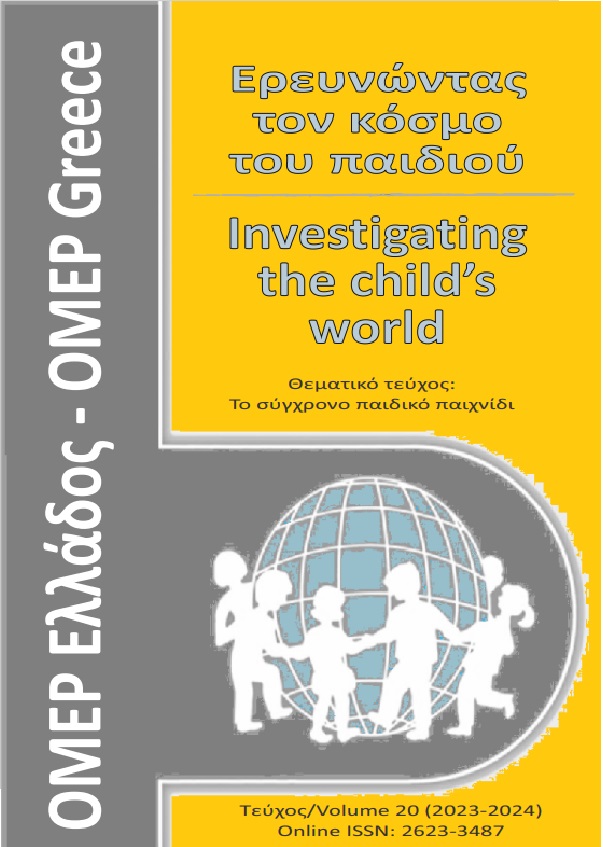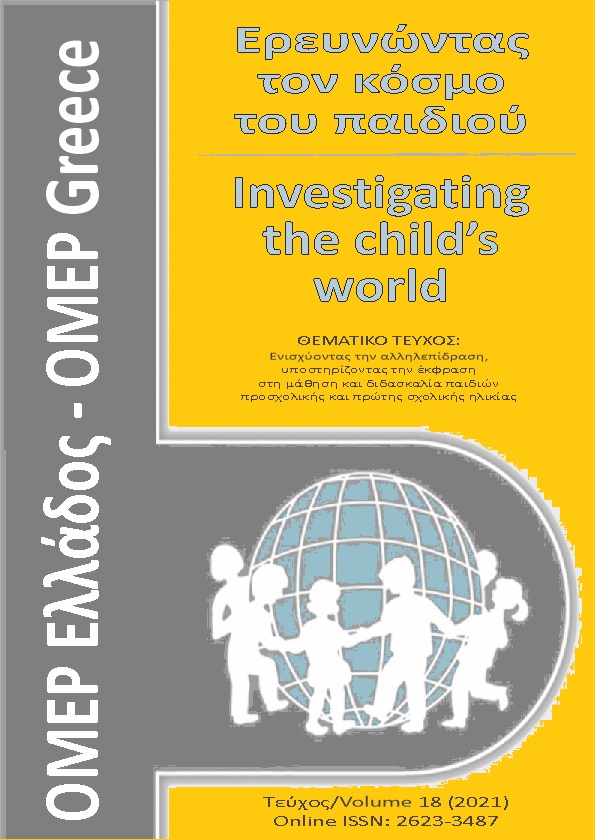Learning through play with the space: a research approach in kindergarten

Abstract
Play is a significant aspect of a child’s development and learning. It is a complex and multilevel activity. During play in different spaces, the child, structures its play according to its personality and experiences that differ because of its dynamic interaction with peers, adults, space and materials. The aim of our research program was the play based learning approach to be a basic part of the structured activities at kindergarten, with the implementation of the cooperative learning and the flexible use of the classroom space and materials. We have chosen the collaborative action research because is a collaborative effort between researchers and teachers, in order to bring together knowledge and experience respectively, bridging the gap between research and practice to implement innovative practices in the educational process. The sample was 52 children aged 3,5 to 6 and the duration was 6 months. The research tools used were a diary and an electronic questionnaire for the teachers, an interview guide for the children and a regular video and photo shooting. The results have shown that the systematic incorporation of play in structured activities, in addition to the pedagogical use of space led to a cooperative classroom culture, with advanced levels of communication and interactions, development of problem-solving abilities and increased participation in the activities.
Article Details
- How to Cite
-
Gkloumpou, A., & Κακανά Δ. Μ. (2024). Learning through play with the space: a research approach in kindergarten. Investigating the child’s World, 20, 128–141. https://doi.org/10.12681/icw.35548
- Section
- Scientific articles & educational projects

This work is licensed under a Creative Commons Attribution-NonCommercial 4.0 International License.
Authors who publish with this journal agree to the following terms:
· Authors retain copyright and grant the journal right of first publication with the work simultaneously licensed under a Creative Commons Attribution Non-Commercial License that allows others to share the work with an acknowledgement of the work's authorship and initial publication in this journal.
· Authors are able to enter into separate, additional contractual arrangements for the non-exclusive distribution of the journal's published version of the work (e.g. post it to an institutional repository or publish it in a book), with an acknowledgement of its initial publication in this journal.
· Authors are permitted and encouraged to post their work online (preferably in institutional repositories or on their website) prior to and during the submission process, as it can lead to productive exchanges, as well as earlier and greater citation of published work.



